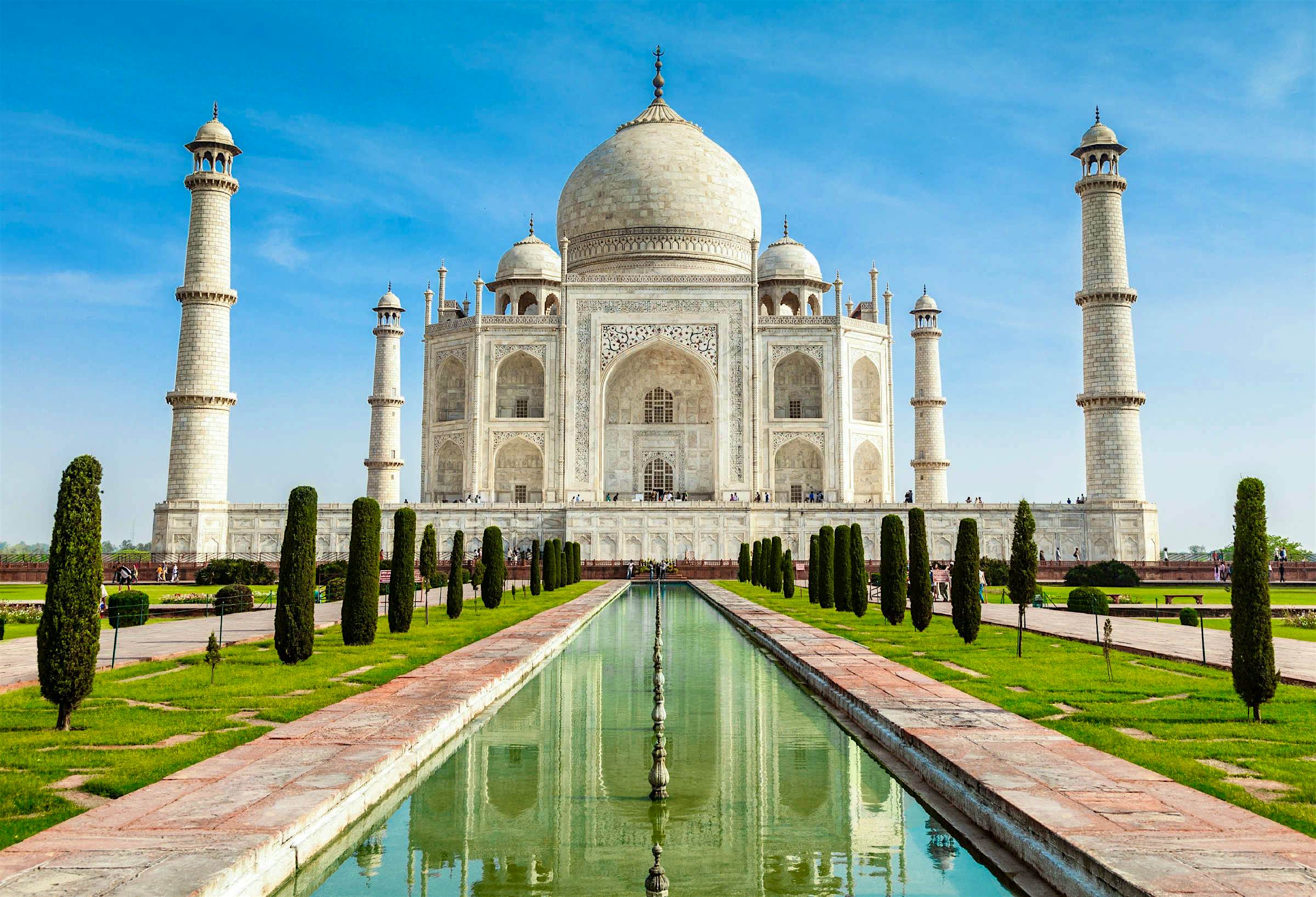The Taj Mahal is an iconic and world-renowned monument located in Agra, Uttar Pradesh, India. It is considered one of the most beautiful architectural masterpieces in the world and is recognized as a UNESCO World Heritage Site. The Taj Mahal is often referred to as a symbol of love and is visited by millions of tourists from around the globe.
Built between 1631 and 1648, the Taj Mahal was commissioned by the Mughal emperor Shah Jahan as a mausoleum for his beloved wife, Mumtaz Mahal, who passed away during childbirth. It is said to have been constructed as a testament to the emperor's undying love and devotion for his wife.
The Taj Mahal is a marvel of Mughal architecture, blending elements from Persian, Islamic, and Indian architectural styles. It is primarily made of white marble and is adorned with intricate carvings, calligraphy, and precious gemstones. The central dome is one of the most striking features, and its four minarets stand tall at each corner of the platform.
The monument is set amidst a vast and well-maintained complex that includes beautiful gardens, reflecting pools, and other structures such as the red sandstone gateway known as the "Darwaza-i-Rauza." The gardens are meticulously laid out in a charbagh (four-fold) style, typical of Mughal gardens, and provide a stunning backdrop to the Taj Mahal.
Visitors to the Taj Mahal can explore the interior, which houses the tombs of Shah Jahan and Mumtaz Mahal. The craftsmanship, intricate marble inlays, and the serene ambiance inside the mausoleum are truly captivating.
The Taj Mahal is particularly renowned for its mesmerizing beauty during sunrise and sunset when the changing light casts different hues on the marble, creating a magical atmosphere. It is advisable to plan a visit during weekdays or less crowded times to fully appreciate the tranquility and splendor of this architectural marvel.
In addition to its architectural significance, the Taj Mahal holds immense cultural and historical importance as a symbol of love, devotion, and the rich Mughal heritage of India. It continues to be a source of inspiration for artists, poets, and visitors from all walks of life.
Chittorgarh Fort, also known as Chittor Fort, is a massive historical fortress located in the city of Chittorgarh in the state of Rajasthan, India. It is one of the largest forts in India and holds great historical and cultural significance. The fort is situated on a rocky hilltop, providing a strategic vantage point over the surrounding plains. Chittorgarh Fort has a rich and turbulent history dating back to the 7th century. It was the capital of the Mewar kingdom and witnessed several battles, sieges, and heroic tales of valor. The fort is associated with the legendary tales of Rajput bravery, honor, and sacrifice. The fort complex spans over 700 acres and is surrounded by massive stone walls that extend for about 13 kilometers (8 miles). Within the fort, there are numerous palaces, temples, towers, and reservoirs that showcase the architectural prowess of the Rajput dynasty. One of the most prominent structures within the fort is the Vijay Stambh (Victory Tower), a towering st...

Comments
Post a Comment